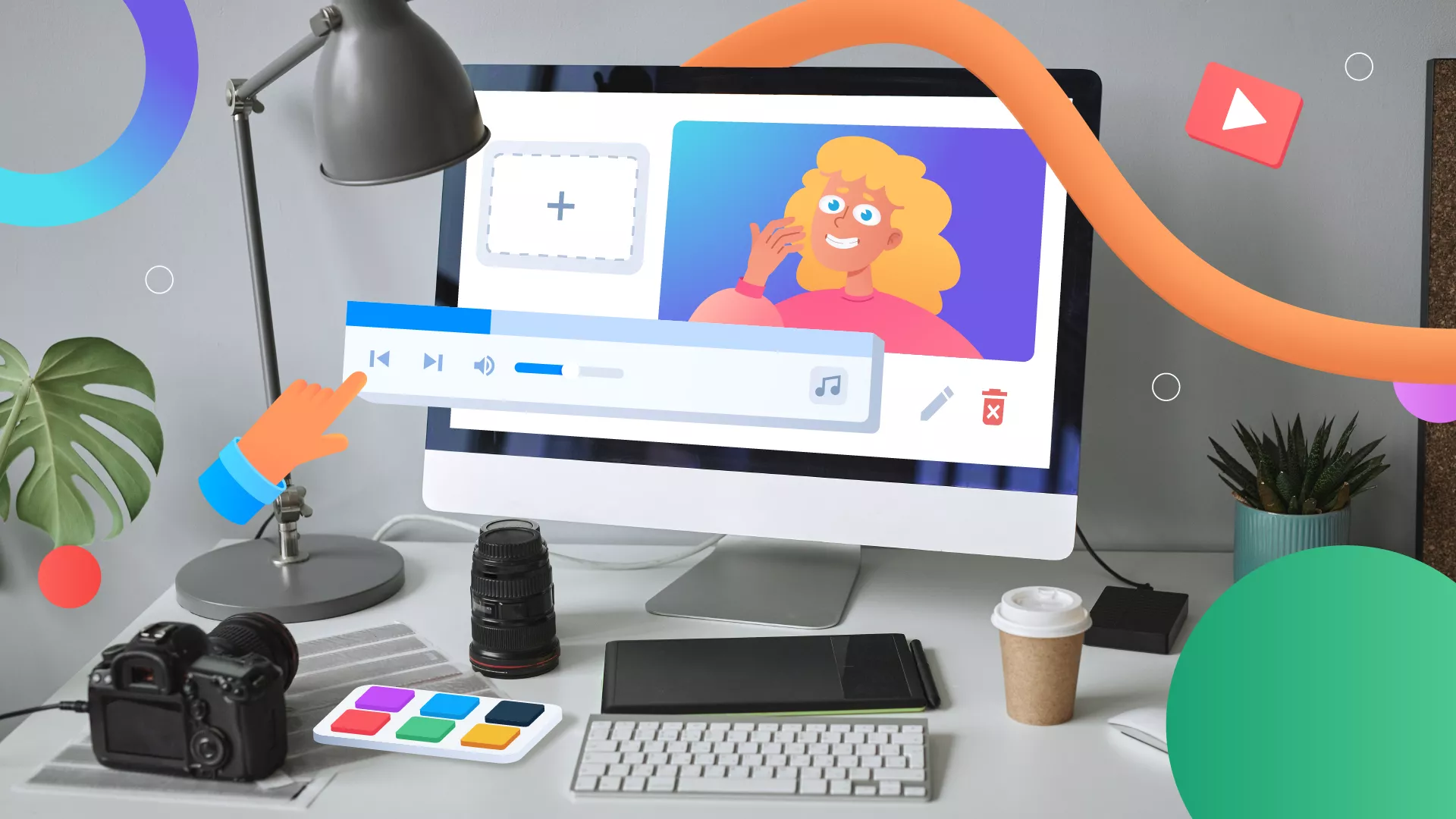In the realm of visual storytelling, video portraits serve as powerful tools for capturing the essence and emotion of individuals. They go beyond traditional photography, offering a dynamic medium that adds depth, movement, and sound to the art of portraiture. By employing this innovative approach, videographers, and filmmakers have found a way to communicate the very soul of their subjects. In this article, we will delve into the world of video portraits, exploring their significance as a general work of art, and discovering how they have become a compelling means of expression.
The Art of Video Portraiture
The Evolution of Portraiture: From Paintings to Moving Images
Portraiture has been a central form of artistic expression throughout history, dating back to ancient civilizations. Traditional portraits immortalized individuals through still images, capturing their likeness in paintings or photographs. However, the advent of technology and the rise of video production have given birth to a new dimension in portraiture. Video portraits have become an artistic endeavor that goes beyond mere representation, offering an opportunity to tell a story and convey the emotional depth of the subject.
Exploring the Power of Movement and Sound
What sets video portraits apart from their static counterparts is their ability to incorporate movement and sound. Through carefully crafted compositions, filmmakers and videographers can create a compelling narrative that captures the subject’s essence and evokes a range of emotions in the viewer. The interplay between visuals, soundscapes, and music enhances the overall experience, creating a multisensory journey that immerses the audience in the subject’s world.
The Essence of Video Portraits
Capturing Authenticity and Vulnerability
Video portraits have the unique ability to capture the authenticity and vulnerability of the subject. With careful direction and sensitive storytelling techniques, filmmakers can create an environment where individuals feel comfortable enough to reveal their true selves. This authenticity allows viewers to connect with the subject on a deeper level, fostering empathy and understanding.
Conveying Emotion and Storytelling
Through the integration of movement and sound, video portraits become a powerful tool for conveying emotion and storytelling. Every subtle gesture, facial expression, and movement contributes to the narrative, inviting viewers to delve into the subject’s experiences and emotions. By carefully selecting and editing footage, videographers can distill the essence of a person’s journey into a condensed, impactful visual story.
The Role of Video Portraits in Society
Amplifying Diverse Voices and Perspectives
Video portraits provide a platform for underrepresented voices and marginalized communities. By showcasing individuals and their stories, these portraits can challenge stereotypes, break down barriers, and promote inclusivity. They allow viewers to experience different cultures, lifestyles, and perspectives, fostering empathy and understanding in an increasingly interconnected world.
Preserving Personal and Collective Memories
Video portraits have the power to preserve personal and collective memories for future generations. They capture significant moments in a person’s life, allowing them to be revisited and cherished long after they have passed. These portraits become invaluable historical documents, providing insights into the human experience and contributing to the preservation of cultural heritage.
The Process of Creating Video Portraits
Pre-production: Conceptualization and Planning
Creating a compelling video portrait requires careful planning and conceptualization. Filmmakers work closely with the subjects to understand their stories, motivations, and desired outcomes. This collaborative process ensures that the final product reflects the essence of the subject while maintaining the filmmaker’s artistic vision.
Production: Capturing the Essence in Motion
During the production phase, videographers utilize their technical expertise to capture the subject’s essence in motion. Lighting, composition, camera movement, and the use of props and locations all play a crucial role in conveying the desired emotions. The director guides the subject, helping them to feel comfortable and confident, resulting in authentic and powerful performances.
Post-production: Crafting the Narrative
In post-production, the captured footage is carefully selected, edited, and combined with sound design and music to create a cohesive narrative. The editing process allows the filmmaker to shape the story, highlighting the most impactful moments and crafting a visually and emotionally engaging portrait. Color grading, visual effects, and audio enhancements further enhance the overall experience, bringing the portrait to life.
The Role of Sound Design and Music Selection in Enhancing Emotional Connection
Sound design and music selection play a pivotal role in enhancing emotional connection in video portraits. They have the power to heighten the impact of visuals, evoke specific emotions, and create a lasting impression on the viewer. In this section, we will explore the significance of sound design and music in video portraits and how they contribute to the overall emotional experience.
Setting the Mood: The Power of Sound Design
Sound design encompasses all the non-musical audio elements in a video portrait, including ambient sounds, dialogue, foley effects, and audio enhancements. These elements work together to create an immersive auditory environment that complements the visuals and amplifies the emotional resonance.
- Ambient sounds: Background noises such as footsteps, rustling leaves, or distant traffic can add depth and realism to a scene, immersing the viewer in the subject’s world. The careful selection and placement of these sounds can evoke a particular atmosphere or emphasize specific emotions.
- Foley effects: Foley artists recreate everyday sounds in a controlled environment to enhance the realism of a scene. For example, the sound of a door closing or a glass shattering can significantly impact the viewer’s perception and emotional response. Foley’s effects help create a sense of presence, allowing viewers to feel more connected to the portrayed individual.
- Audio enhancements: By manipulating audio elements during the post-production phase, filmmakers can accentuate specific aspects of a video portrait. Adjusting the volume, adding reverberation, or applying filters can create a sense of intimacy or intensity, heightening the emotional impact.
Use KROCKIO’s audio annotation tool to make working with sound more convenient.

The Power of Music: Evoking Emotion and Establishing a Narrative
Music is a powerful tool for eliciting emotions and establishing the overall tone and narrative of a video portrait. The right musical composition can evoke joy, sadness, tension, or nostalgia, creating a deep emotional connection between the viewer and the subject.
- Emotional resonance: Music has a direct link to our emotions. The use of specific melodies, harmonies, and rhythms can trigger physiological and psychological responses in viewers, evoking empathy and fostering a deeper emotional connection. For example, a slow, melancholic melody can convey a sense of longing or reflection, while an energetic beat can evoke excitement or anticipation.
- Establishing a narrative: Music can act as a narrative thread, guiding the viewer through the story and highlighting key moments in the subject’s life. By selecting music that reflects the subject’s personality, experiences, or cultural background, filmmakers can enhance the authenticity and relatability of the portrait. The music becomes an integral part of the storytelling process, shaping the viewer’s perception and emotional journey.
The Synergy of Sound Design and Music
The most impactful video portraits are the result of a harmonious synergy between sound design and music selection. When these elements work in tandem, they create a multi-sensory experience that immerses the viewer in the subject’s world and elicits a profound emotional response.
- Complementing visuals: Sound design and music should complement the visuals, enhancing their impact and supporting the desired emotional tone. They should not overpower or distract from the visuals but rather work in harmony to create a cohesive and immersive experience.
- Emotional cues: Sound design and music can serve as emotional cues, guiding the viewer’s emotional journey throughout the video portrait. By strategically using silence, crescendos, or changes in tempo, filmmakers can elicit specific emotional responses at key moments, further strengthening the connection between the viewer and the subject.
- Cultural and contextual relevance: The selection of sound design elements and music should consider the cultural and contextual background of the subject. Incorporating sounds or music that are culturally significant or reminiscent of specific experiences can deepen the emotional connection and enhance the authenticity of the portrait.
Conclusion
Video portraits have revolutionized the world of portraiture, enabling artists to capture the essence and emotion of people through moving images. By incorporating movement, sound, and storytelling techniques, these portraits transcend traditional static representations, offering a dynamic and immersive experience.
Their ability to convey authenticity, vulnerability, and diverse perspectives makes them a powerful medium for social change and the preservation of personal and collective memories. As technology continues to evolve, the art of video portraiture will undoubtedly push the boundaries of creativity and innovation, further enriching our understanding of the human experience.

